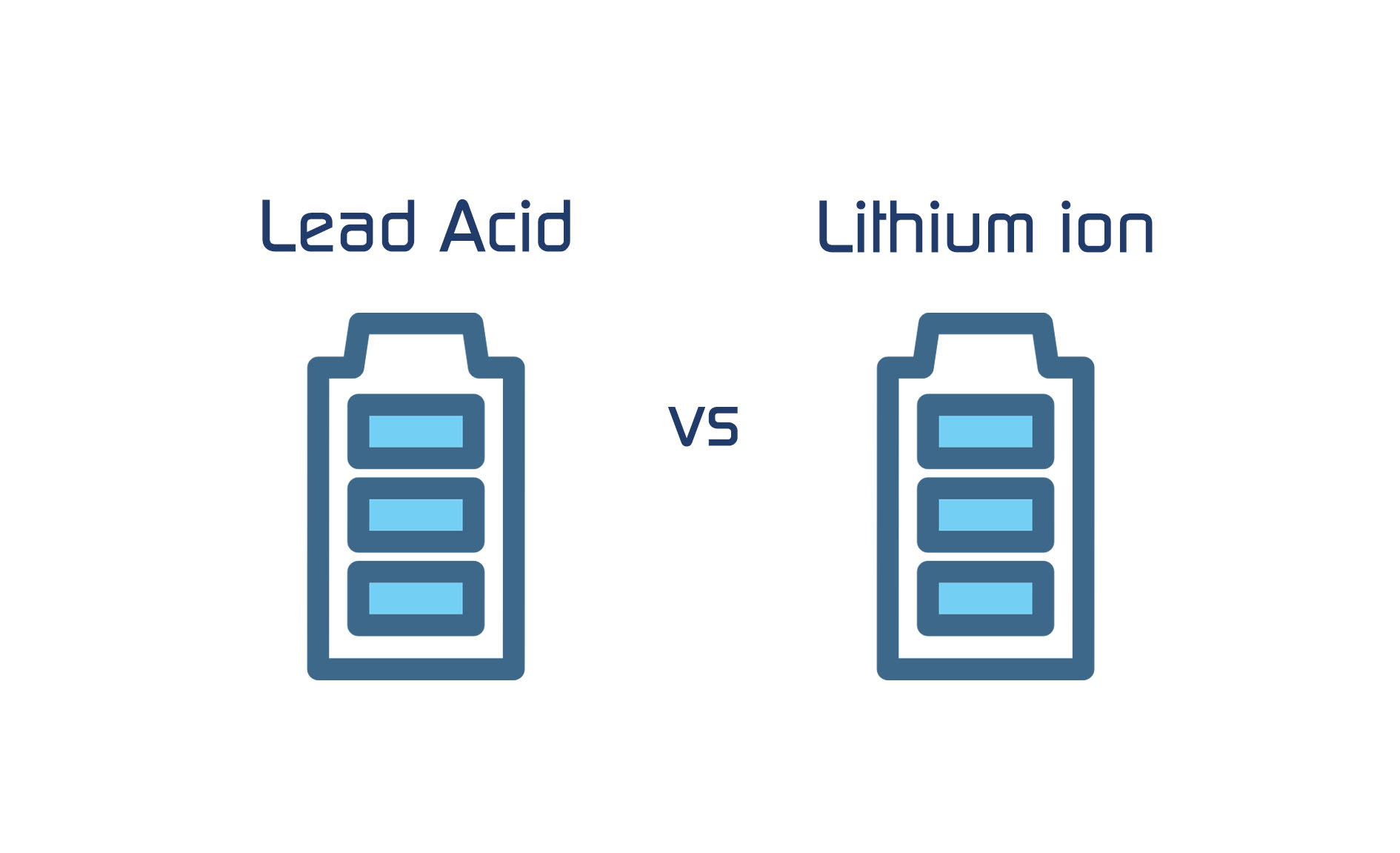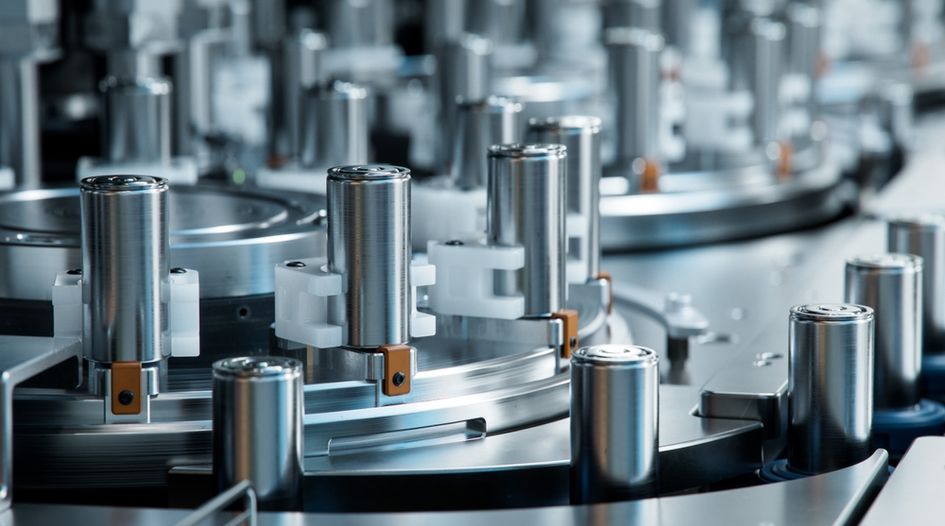Lead-Acid vs Lithium Batteries: Differences for Industrial Applications
Selecting the appropriate battery (lead acid or lithium )type holds significant importance for a wide range of industrial applications. Industries such as telecommunications, uninterruptible power supply (UPS) systems, renewable energy projects, and more rely on efficient and reliable power solutions.
When it comes to meeting these demands, understanding the disparities between lead-acid batteries and lithium batteries becomes essential. By delving into the contrasts between these battery technologies, industrial businesses can make informed decisions that cater to their unique power requirements.
In this guide, we will explore the differences between lead-acid batteries (specifically VRLA and AGM) and lithium batteries, highlighting their construction, advantages, disadvantages, and common uses in the industrial sector.
Lead-Acid Batteries

VRLA (Valve-Regulated Lead-Acid) Batteries
VRLA batteries are sealed, maintenance-free lead-acid batteries that utilize an internal pressure relief valve. Key features include:
- Description and construction: VRLA batteries use a gel or absorbent glass mat (AGM) to immobilize the electrolyte, eliminating the need for regular maintenance and allowing for flexible installation orientations.
- Advantages: VRLA batteries are cost-effective, have a long history of reliable performance, and can handle high discharge currents. They are ideal for applications where deep cycling or frequent power outages are common.
- Disadvantages: VRLA batteries have a relatively shorter cycle life compared to lithium batteries and can be sensitive to temperature fluctuations. They also have a lower energy density, resulting in larger physical dimensions and heavier weight.
- Common uses: VRLA batteries are commonly used in telecommunications, UPS systems, emergency lighting, and security systems.
AGM (Absorbent Glass Mat) Batteries
AGM batteries are a type of VRLA battery with a fiberglass mat that absorbs and immobilizes the electrolyte. Its vital attributes to consider include:
- Description and construction: AGM batteries have a similar construction to VRLA batteries but use an absorbent glass mat to hold the electrolyte. This design provides enhanced performance and better resistance to vibration.
- Advantages: AGM batteries offer excellent deep cycling capabilities, high discharge rates, and are maintenance-free. They are ideal for applications that require reliable power backup, such as UPS systems, emergency lighting, and renewable energy storage.
- Disadvantages: AGM batteries are sensitive to overcharging, which can reduce their lifespan. They also have limited tolerance for high temperatures and may experience reduced performance under extreme conditions.
- Common uses: AGM batteries find applications in telecommunications, UPS systems, renewable energy projects, electric vehicles, and marine equipment.
Lithium Batteries
Lithium batteries have gained significant popularity in recent years due to their high energy density and performance advantages. These batteries have the following key features:
- Description and construction: Lithium batteries utilize lithium-ion chemistry to store and release electrical energy efficiently. They are typically lighter and more compact than lead-acid batteries.
- Advantages: Lithium batteries offer higher energy density, longer cycle life, and faster charging capabilities compared to lead-acid batteries. They have a wider operating temperature range, allowing for better performance in extreme environments.
- Disadvantages: Lithium batteries are generally more expensive upfront, although their longer lifespan and higher efficiency can offset the initial cost. They require a battery management system (BMS) for optimal performance and safety.
- Common uses: Lithium batteries are well-suited for a wide range of industrial applications, including renewable energy storage, electric vehicles, portable power systems, medical equipment, and telecommunications.
Comparison of Battery Types
When examining the differences between lead-acid batteries (VRLA and AGM) and lithium batteries for industrial-grade deployments, the following key factors should be considered:
- Capacity and Energy Density: Lithium batteries offer higher energy density, allowing for greater energy storage in a smaller physical footprint.
- Weight and Size: Lithium batteries are significantly lighter and more compact than lead-acid batteries, making them easier to transport and install.
- Cycle Life and Maintenance: Lithium batteries typically have a longer cycle life compared to lead-acid batteries, requiring fewer replacements over time. They also require minimal maintenance.
- Efficiency and Performance: Lithium batteries have higher charge and discharge efficiency, providing more usable energy for industrial applications.
- Cost: Lead-acid batteries have a lower upfront cost but may require more frequent replacements, while lithium batteries have a higher upfront cost but offer longer-term cost savings due to their longer lifespan and efficiency.
Choosing the Right Battery Type
Choosing the optimal battery type for your industrial needs demands a thorough evaluation of specific requirements. Factors to consider include:
- Application-specific requirements: Assess the power demands, cycling needs, space limitations, and environmental conditions of your application.
- Performance expectations: Determine the desired lifespan, energy efficiency, and overall performance requirements.
- Budget considerations: Evaluate the initial investment and long-term cost-effectiveness of the battery solution.
- Safety and regulatory compliance: Ensure that the chosen battery type meets industry safety standards and complies with relevant regulations.
Conclusion
Having a comprehensive understanding of the disparities between lead-acid batteries (VRLA and AGM) and lithium batteries is essential for making well-informed decisions in industrial applications. While lead-acid batteries offer reliability and cost-effectiveness, lithium batteries provide higher energy density, longer cycle life, and better performance. Assessing the specific needs of your application and considering factors such as capacity, weight, cycle life, and cost will guide you in selecting the right battery type to meet your industrial requirements.
Contact us here at National Battery Supply today to find the best solution for your needs.



